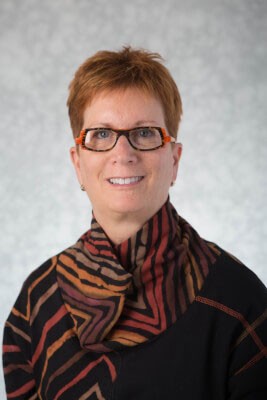GVSU professor helps study eighth grade math curriculum

GVL / Courtesy – GVSU.edu Lisa Kasmer
Oct 20, 2016
The majority of people who have been through the U.S. public school system are familiar with or have an understanding of the Common Core programs. As with any educational module, the Common Core program could stand to be worked on and continuously improved.
One Grand Valley State University professor hopes to do just that.
The National Science Foundation (NSF) recently announced the winners of its “Investigating Middle Grades Mathematics Teachers’ Curricular Reasoning” grant, which is designed to study how to align a middle school math course curriculum is with the guidelines and standards set by Common Core. The grant is worth $1 million and is split among four schools. GVSU received $295,523 of that money.
GVSU will be working with the University of Arkansas, University of Nevada Las Vegas (UNLV) and Brigham Young University (BYU) to find how teachers teaching transformational geometry try to correct misalignments in the curriculum and Common Core standards. They will also be studying how the teachers implement new material given to them by the Common Core.
Lisa Kasmer, associate professor of mathematics at GVSU and principal investigator for the project in Michigan said project investigators are going to be specifically looking at eighth grade math teachers who teach transformational geometry and what happens when a part of the curriculum is missing.
“We just carved out a small piece of the math curriculum to study. When they notice there is a misalignment between what the Common Core tells them they need to do, what do they do?” Kasmer said.
The NSF gives out grants with similar goals in mind every year since and this is GVSU’s seventh time applying for a grant and its third time applying for the specific variation of the grant it received this year.
“When you apply, they give you feedback,” Kasmer said. “And then (you) try to make it better and address their feedback. This time, it worked out.”
The research will be conducted by Kasmer, a full-time graduate student and undergraduate student who will, over the course of a year, go to different public schools in West Michigan and conduct interviews, observations, videotape lessons, collect lesson plans and other things pertaining to the curriculum.
The data collected will be entered and coded into a server shared among the four universities where researchers at all four universities will be able to check the others data against their own and look for inconsistencies.
The researchers will meet in-person three times over the course of the year the study takes place, with video conference calls sprinkled in throughout.
Kasmer has worked with the researchers at the other three colleges in the past and is excited to be working with them again, she said.
“This has been a group I’ve been working with for the past 10 years,” Kasmer said. “We’ve written articles, we’ve done presentations. We’re anxious to get started and we’re anxious to start uncovering what’s out there.”

























